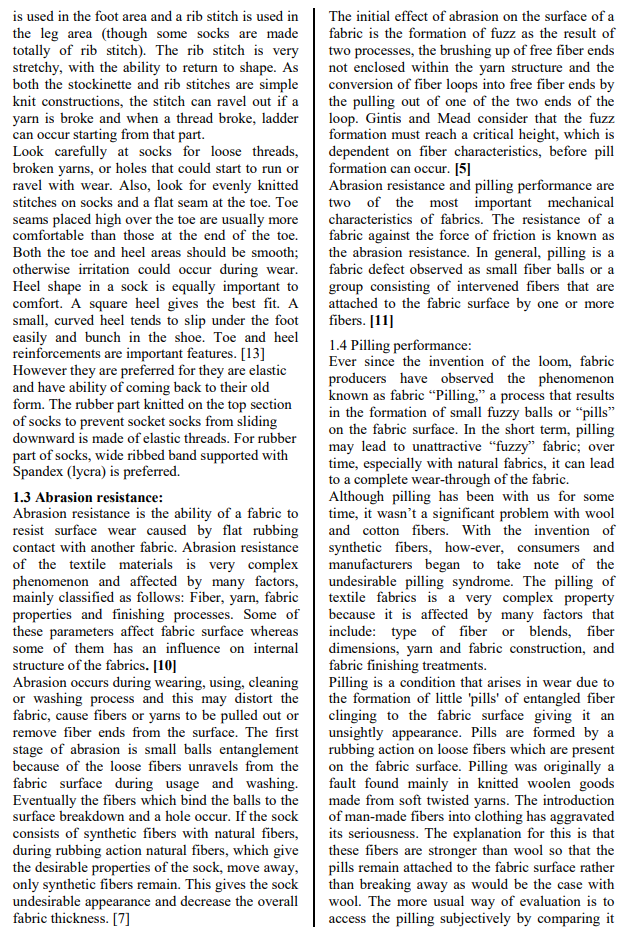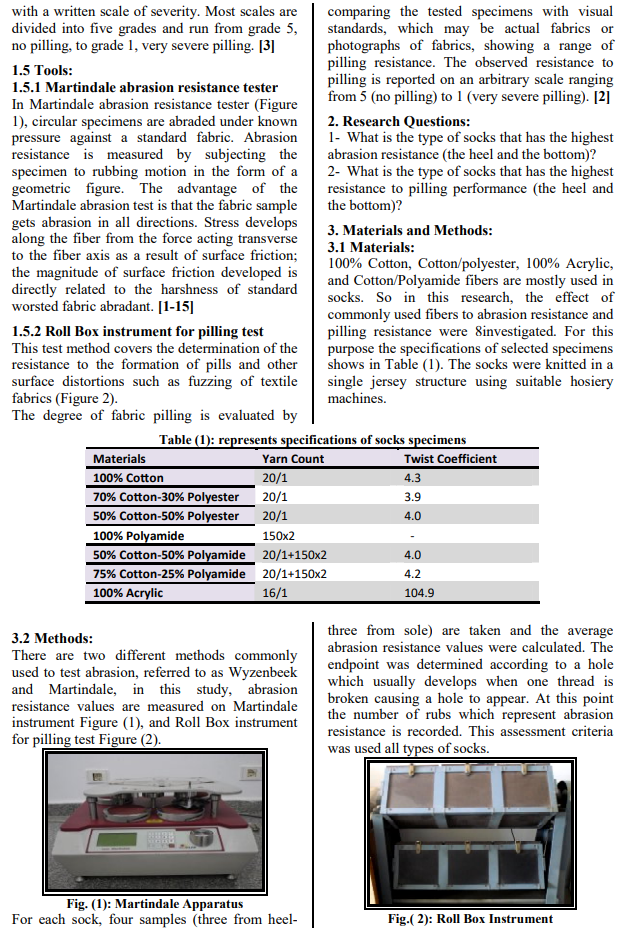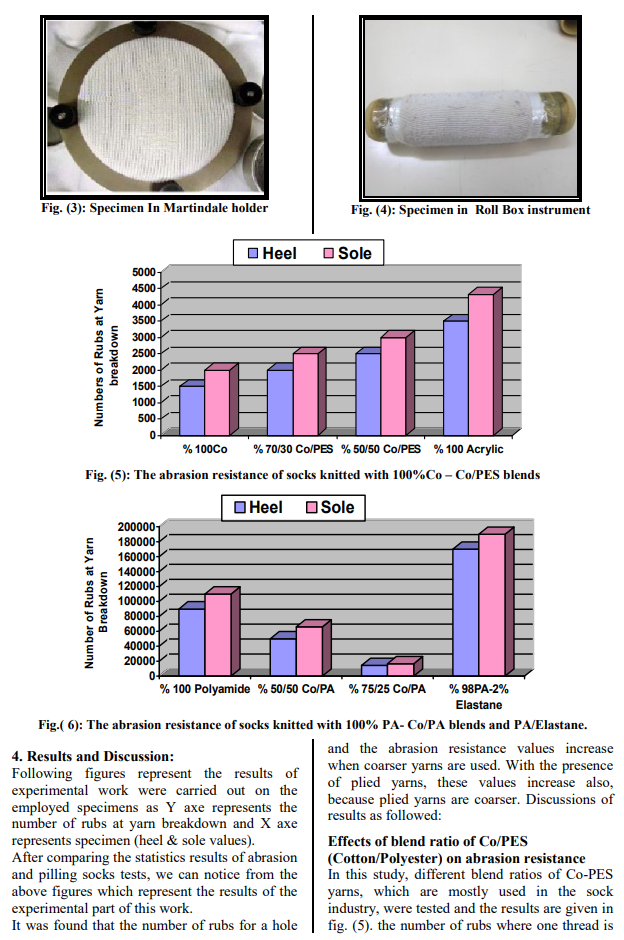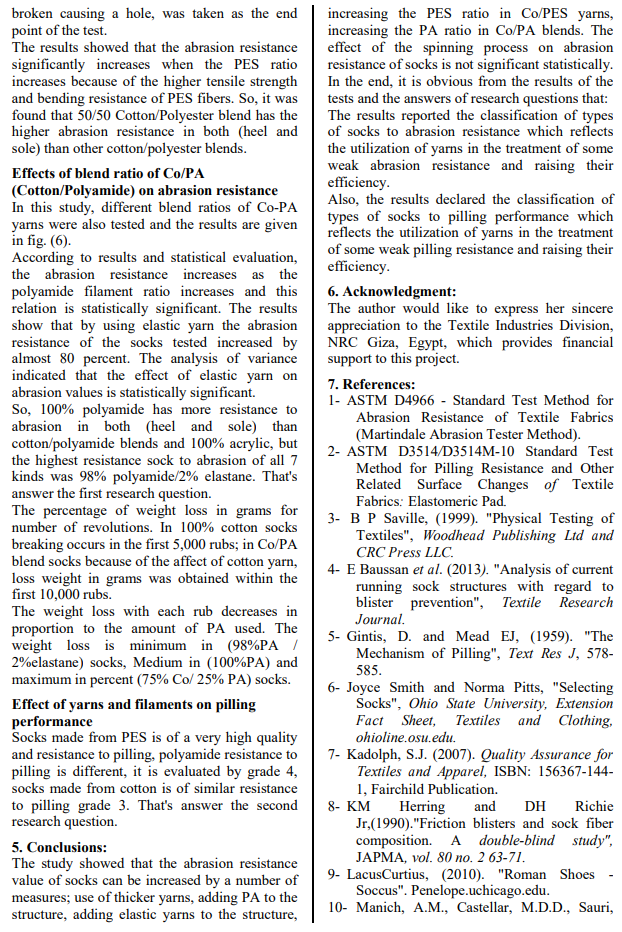A sock is an item of clothing worn on the feet. The name is derived from the loose-fitting slipper, called a soccus in Latin, worn by Roman comic actors.
Socks come in a variety of fibers and fiber combinations. Commonly used fibers include cotton, wool, nylon, acrylic, polyester, olefin,and spandex. Occasionally, luxury fibers such as silk, linen, cashmere, or mohair will be blended for softness, but this adds to the cost.Socks are knitted, giving them stretch and the ability to conform to the foot and leg. [6] Socks, which are a necessary item of clothing,need to be comfortable, affordable. They should retain their quality throughout their life. The span life of the socks is shorter than other textile materials because of higher abrasion within the shoes, slippers or even the ground during usage.Abrasion usually occurs on the heel, sole and toes of the socks. The socks rub within the shoes, slippers or even the ground. The life of sock becomes shorter with the changing in mechanical properties and decreasing in quality due to abrasion. This can greatly reduce the material's life. To determine the parameters affecting the sock abrasion will be useful both for producer and for consumer.
A number of studies have investigated the abrasion resistance of terry socks. Miajewska and Kazmierczak (1983), and Wisniak (1987) of abrasion resistance of seven different types of socks consisting of different rates of Co-PA.In their study carried out in 1981Sivakumar and Pillay defined the pilling as a phenomenon exhibited by fabrics formed from staple spun yarns. Pills are masses of tangled fibers that appear on fabric surfaces during wear or laundering, resulting in an unsightly appearance and an unpleasant handle. While Sridharan(1982) defined pilling as a physical process appearing on the surface of a garment, taking the form of small balls made up of fibers,sometimes with contaminants. These fibers give a bad appearance to the garment.In Baussan et al study (2013) six types of cotton-made athletic socks were studied in order to evaluate the influence of the knitted structure on the sock-to-skin friction, he found that a plain jersey knitted with two yarns, were found to be most suitable for running socks. A further study was carried out by KM Herring and DH Richie Jr, where, they studied Two different socks were tested, One test sock was composed of 100% acrylic fibers, and the other test sock was composed of 100% natural cotton fibers. The results showed that acrylic fiber socks were associated with fewer blistering events and smaller blisters (mm2), when compared directly to cotton fiber socks.
Socks Constructions:
Socks are knitted, giving them stretch and the ability to conform to the foot and leg. Knit structures used in socks must be in adequate elasticity and fit to feet and legs. Generally, a rib or jersey knit structures is generally used for legs and foot top. stockinette or plain knit stitch is used in the foot area and a rib stitch is used in the leg area (though some socks are made totally of rib stitch). The rib stitch is very stretchy, with the ability to return to shape. As both the stockinette and rib stitches are simple knit constructions, the stitch can ravel out if a yarn is broke and when a thread broke, ladder can occur starting from that part.



